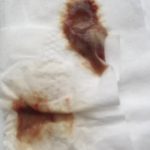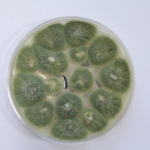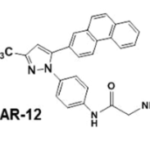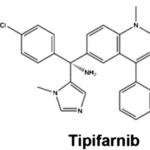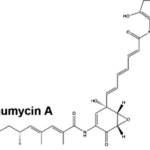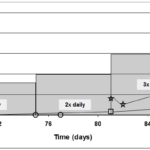Date: 7 May 2013
Copyright:
Copyright B.Flannigan, R Samson & JD Miller (From Microorganisms in home and indoor work environments, Published by Taylor and Francis)
Notes:
Colonies on CYA 60 mm or more diam, usually covering the whole Petri dish, plane, velutinous, of low, usually subsurface, white mycelium, surmounted by a layer of closely packed, black conidial heads, ca 2-3 mm high; reverse usually pale, sometimes pale to bright yellow. Colonies on MEA varying from 30-60 mm diam, usually smaller than those on CYA and often quite sparse by comparison, otherwise similar. Colonies on G25N 18-30 mm diam, plane, velutinous, with white or pale yellow mycelium visible at the margins, otherwise similar to those on CYA; reverse pale or occasionally with areas of deep brown. No growth at 5°C. At 37°C, colonies 60 mm or more diam, covering the available space, sometimes sulcate, otherwise similar to those on CYA at 25°C.
Conidiophores borne from surface hyphae, 1.0-3.0 mm long, with heavy, hyaline, smooth walls; vesicles spherical, usually 50-75 µm diam, bearing closely packed metulae and phialides over the whole surface; metulae 10-15 µm long, or sometimes more; phialides 7-10 µm long; conidia spherical, 4-5 µm diam, brown, with walls conspicuously roughened or sometimes striate, borne in large, radiate heads.
Distinctive features
One of the best known of all fungal species, Aspergillus niger is distinguished by its spherical black conidia, derived from colonies which show little or no other colouring.
Images library
-
Title
Legend
-
Images and abstract taken from Mert D et.al., Hematol Rep. 2017 Jun 1;9(2):6997. doi: 10.4081/hr.2017.6997. Invasive Aspergillosis with Disseminated Skin Involvement in a Patient with Acute Myeloid Leukemia: A Rare Case.
Invasive pulmonary aspergillosis is most commonly seen in immunocompromised patients. Besides, skin lesions may also develop due to invasive aspergillosis in those patients. A 49-year-old male patient was diagnosed with acute myeloid leukemia.
The patient developed bullous and zosteriform lesions on the skin after the 21st day of hospitalization. The skin biopsy showed hyphae. Disseminated skin aspergillosis was diagnosed to the patient.
Voricanazole treatment was initiated. The patient was discharged once the lesions started to disappear.
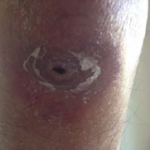 ,
, 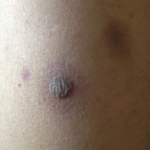 ,
, 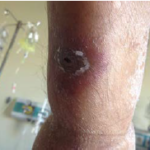 ,
, 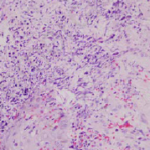 ,
, 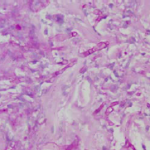
-
A pile of woodchip stored for use in a garden usually as a weed suppressing mulch. The heat building up in the pile is illustrated by the plumes of steam eminating from the top of the pile.
Aspergillus fumigatus is particularly well adapted to grow in the heat (up to 60C) found in such piles of rotting organic material and this characteristic, an adaption for its life in its natural environment also enables it to survive and grow in warm mammalian bodies at 37C. Most fungi cannot grow or survive at those temperatures
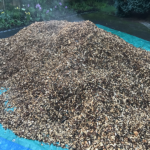 ,
, 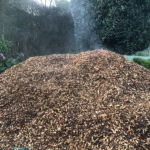 ,
, 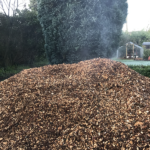 ,
, 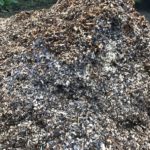
-
MK is 59 years old and presented with right sided pleuritic chest pain and coughing over 1 week. A chest Xray and then CT scan revealed complete collapse of her right lower lobe and middle lobes. Mucous retention is seen just proximal to the abrupt cutoff. There was mild bronchiectasis.
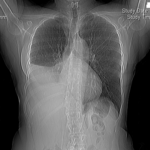 ,
, 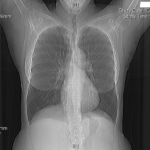

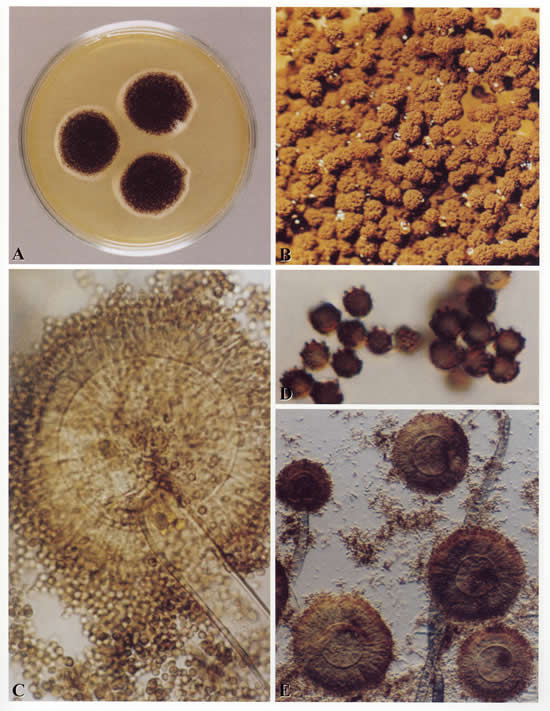

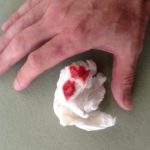 ,
, 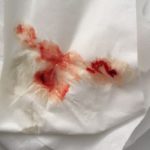 ,
, 